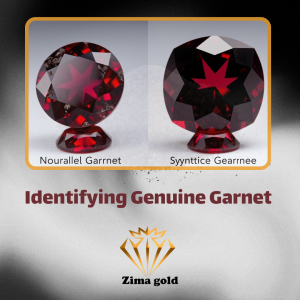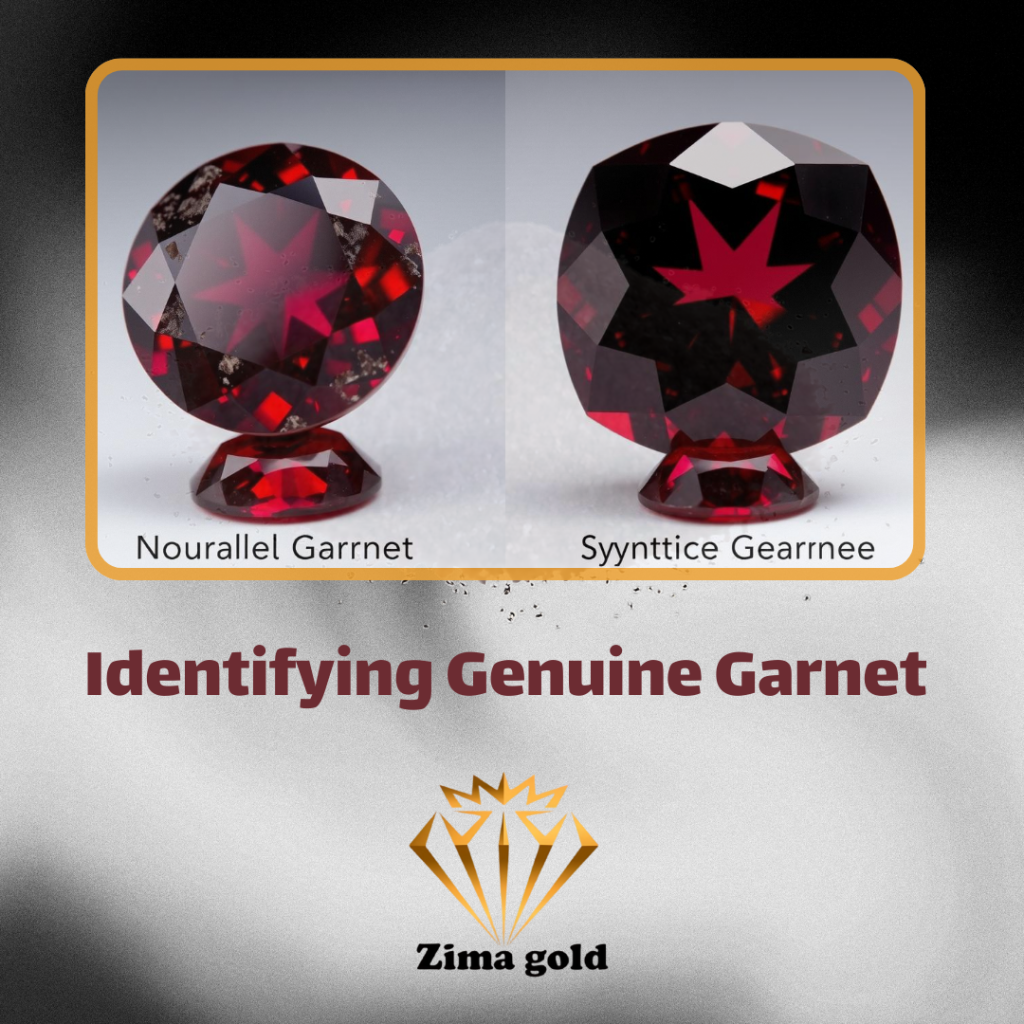Identifying Genuine Garnet
Identifying genuine garnet from counterfeit stones is a challenge in the gemstone market, which is rife with fakes that can easily mislead buyers. This guide will help you differentiate authentic garnet from imitations by familiarizing you with its physical characteristics, scientific testing methods, and the differences between natural and synthetic garnet.
Key Points
- Understanding the color varieties of garnet found in nature.
- Examining the crystal structure and appearance of garnet.
- Scientific methods for verifying garnet authenticity.
- Differences between natural and synthetic garnet.
- Familiarity with principal garnet extraction regions worldwide.

Recognizing Genuine Garnet and Its Characteristics
Garnet is a valuable gemstone with unique physical properties. This section discusses the colors, structure, and appearance of garnets.
Color Varieties of Garnet in Nature
Garnets come in various colors, including:
- Red
- Orange
- Yellow
- Green
- Purple
- Blue
- Brown
Crystal Structure and Appearance
Garnets typically possess a cubic crystal structure, giving them a beautiful and shiny appearance.
Principal Garnet Extraction Regions Worldwide
Valuable garnets are found in several regions, including:
- India
- South Africa
- United States
- Russia
- Brazil
- Germany
- Iran (Zima Gold Company)
“Garnets are recognized as unique and popular gemstones that exhibit a wide range of colors in nature.”
How to Identify Genuine Garnet
Determining the authenticity of garnet stones is crucial in the realm of gemstones. Testing garnet authenticity helps ensure you are buying genuine stones.
Now, let’s discuss methods for identifying authentic and natural garnet:
- Visual Inspection: Genuine garnets have regular geometric shapes and smooth surfaces.
- Weight and Density Check: Natural garnets usually have a higher weight and density.
- Hardness Test: Authentic garnets are harder.
- Optical Testing: Natural garnets exhibit specific optical properties.
These methods, combined with knowledge and experience, assist in identifying authentic garnets.
| Feature | Natural Garnet | Synthetic Garnet |
|---|---|---|
| Appearance | Usually regular and smooth | Often irregular and rough |
| Weight and Density | Greater | Less |
| Hardness | Higher | Lower |
| Optical Properties | Natural properties | Synthetic properties |
By using these methods, you can distinguish genuine and natural garnets from fakes.
Scientific Testing Methods for Garnet Authenticity
To ensure the authenticity of garnet, attention must be paid to its physical and chemical characteristics. Tests such as hardness testing using the Mohs scale, examining optical properties and light refraction, and determining density and specific weight can help.
Hardness Testing with Mohs Scale
The Mohs scale is used to ascertain the hardness of minerals. Garnet typically has a hardness of 7 to 7.5 on this scale. Performing this test can help assess the hardness of your specimen.
Examining Optical Properties and Light Refraction
The optical properties of garnet, such as color and clarity, are important. Genuine garnets usually display specific optical characteristics that differ from synthetic samples; these features can aid in identifying natural garnets.
Determining Density and Specific Weight
The density and specific weight of garnet are also significant. Natural garnet usually has a density of 3.5 to 4.3 grams per cubic centimeter. Measuring and comparing these attributes can assist in determining authenticity.
Using these methods allows for a more accurate examination of garnet authenticity, helping to avoid purchasing fakes.
| Feature | Natural Garnet | Synthetic Samples |
|---|---|---|
| Hardness | 7 to 7.5 on Mohs | Different from natural garnet |
| Optical Properties | Specific natural properties | Different from natural garnet |
| Density | 3.5 to 4.3 g/cm³ | Different from natural garnet |
Key Differences Between Natural and Synthetic Garnet
When purchasing garnet, distinguishing between natural and synthetic varieties can be challenging. Natural and synthetic garnets exhibit significant differences, observable in appearance and physical properties.
One of the main differences is in color and clarity. Natural garnets have diverse colors such as red, purple, green, and yellow but usually have lower clarity. In contrast, synthetic garnets display more uniform colors and higher clarity.
Crystal structures also differ. Natural garnets have irregular crystal structures and undefined shapes, whereas synthetic garnets exhibit organized crystal structures and defined shapes.
“Identifying genuine garnet from counterfeit samples is essential for buyers to ensure the authenticity and integrity of their purchases.”
Awareness of these differences empowers buyers to distinguish natural garnets from synthetic ones, ensuring a correct purchase.
Summary
In this section, we’ve highlighted the key points for identifying genuine garnet. Distinguishing natural garnet from synthetic samples is achievable through scientific methods. From assessing hardness to analyzing optical properties, these methods help differentiate between authentic and counterfeit stones.
To identify natural garnet, one must understand its visual and structural characteristics, know the colors garnet exhibits in nature, and pay attention to details such as crystal shapes and extraction regions.
Overall, adhering to these guidelines and employing scientific methods aids gemologists and buyers, enabling them to evaluate garnet stones with greater confidence and avoid counterfeit products.
How can I distinguish genuine garnet from fake ones? Focus on the physical characteristics of garnet and utilize scientific tests to verify its authenticity. The natural colors of garnet and their crystal structures are crucial.
What visual features are observable in genuine garnet? Natural garnets have a variety of colors, including red, purple, green, and orange. Their crystal structure is often cubic or dodecahedral. These stones can be found in Africa, the USA, and Asia.
What scientific methods exist for verifying garnet authenticity? Utilize scientific tests such as hardness testing with the Mohs scale and examining optical properties. Additionally, density and specific weight can be assessed.
What fundamental differences exist between natural and synthetic garnet? Natural garnets contain inclusions and natural impurities, and their crystalline patterns are unique. Scientific tests like examining hardness and optical properties reveal these differences.

